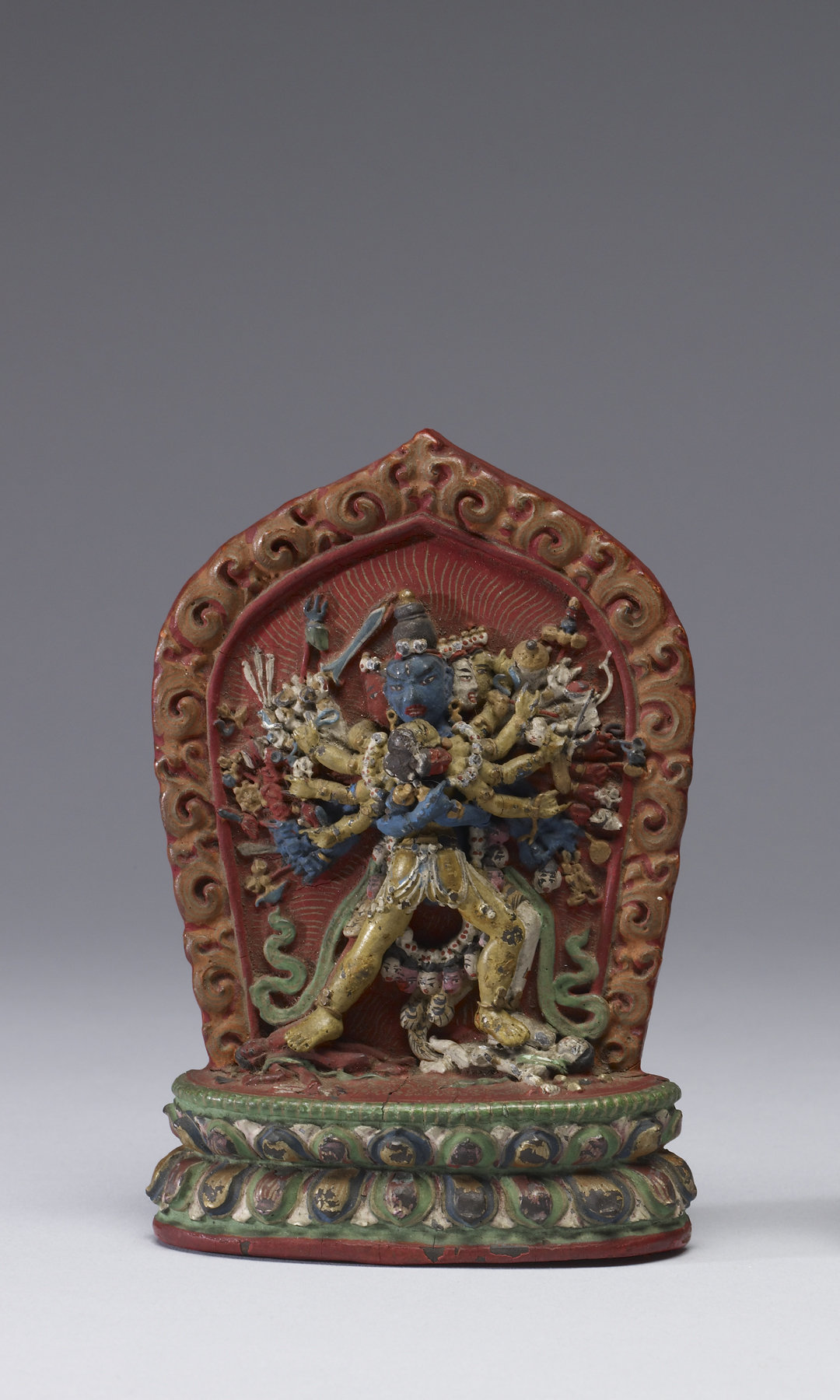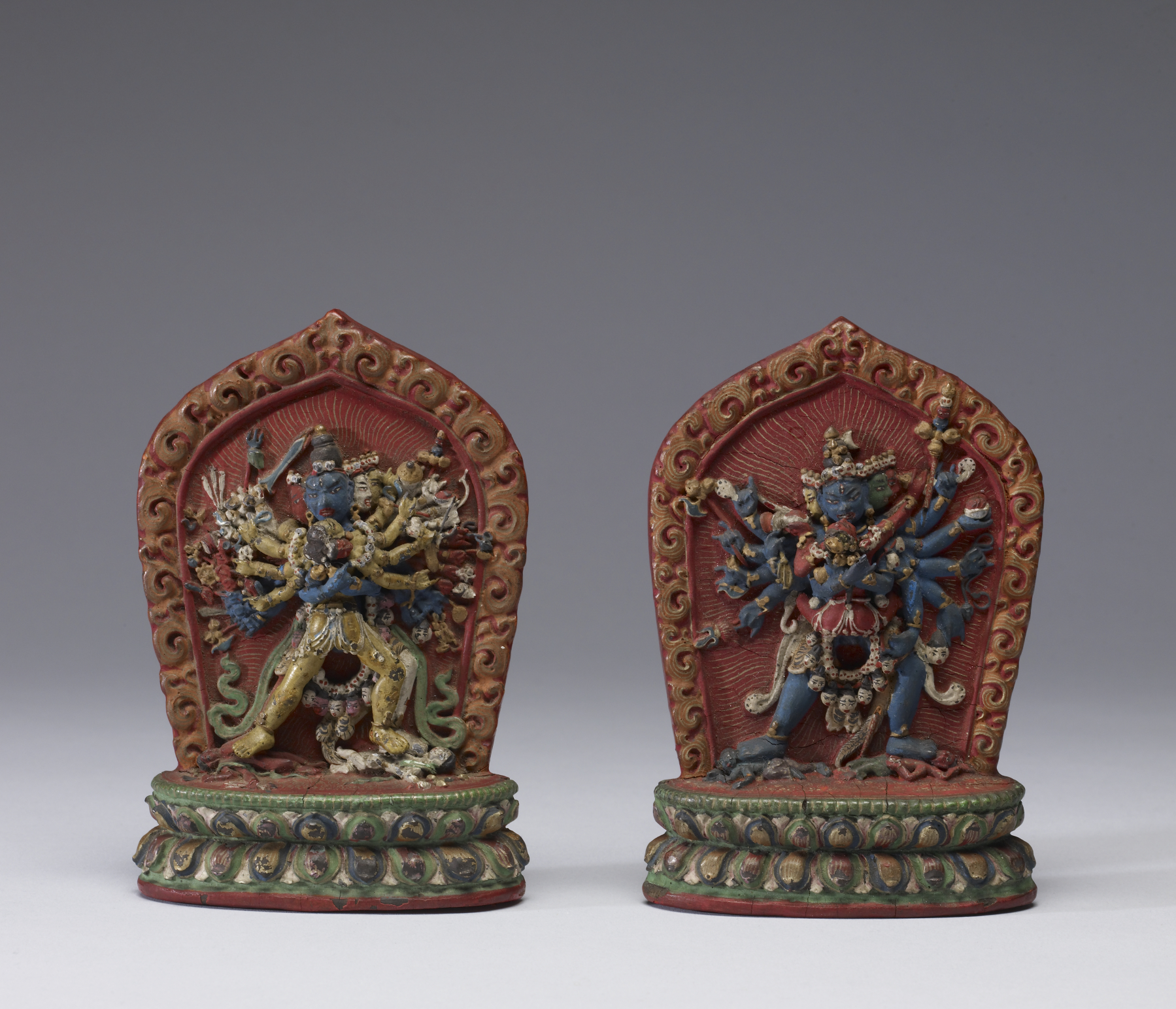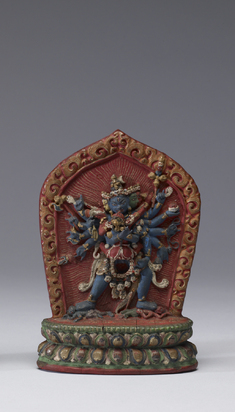One of a Pair of Votive Plaques
(India, Nepal, and Tibet)
Today we can appreciate the precise details and vibrant colors of these small clay plaques, but they were probably not made to be viewed. Rather, they would have been placed inside a commemorative monument known as a stupa, or within the foundations of another Tibetan Buddhist religious building. Called "tsha-tsha" in Tibetan, such plaques are usually made from molds and may be painted, gilded, or left unadorned. They enhance the power of the structure within which they are deposited and bring merit to those who donate them.
Each of these tsha-tshas depicts a pair of embracing deities. On the left is the male Kalachakra with his partner, the yellow Vishvamata, and on the right is Chakrasamvara with the red Vajravarahi. Both male deities embody compassion and skillful means, while the female deities embody transcendent wisdom. In Tibetan Buddhist thought, enlightenment–a state of omniscience accompanied by a release from desire, suffering, and rebirth–results from the union of these principles. These embracing deities therefore manifest the ideal of enlightenment, the most powerful attainment of all.
Provenance
Provenance (from the French provenir, 'to come from/forth') is the chronology of the ownership, custody, or location of a historical object.
Christopher Bruckner, Zurich, Switzerland; purchased by John and Berthe Ford, Baltimore, June 1996; given to Walters Art Museum, 2014.
Exhibitions
| 2001-2003 | Desire and Devotion: Art from India, Nepal, and Tibet in the John and Berthe Ford Collection. The Walters Art Museum, Baltimore; Santa Barbara Museum of Art, Santa Barbara; Albuquerque Museum, Albuquerque; Birmingham Museum of Art, Birmingham; Hong Kong Museum of Art, Hong Kong. |
Geographies
Tibet (Place of Origin)
Measurements
H: 4 15/16 × W: 3 5/16 × D: 1 in. (12.5 × 8.4 × 2.5 cm)
Credit Line
Gift of John and Berthe Ford, 2014
Location in Museum
Not on view
Accession Number
In libraries, galleries, museums, and archives, an accession number is a unique identifier assigned to each object in the collection.
In libraries, galleries, museums, and archives, an accession number is a unique identifier assigned to each object in the collection.
25.268.1





